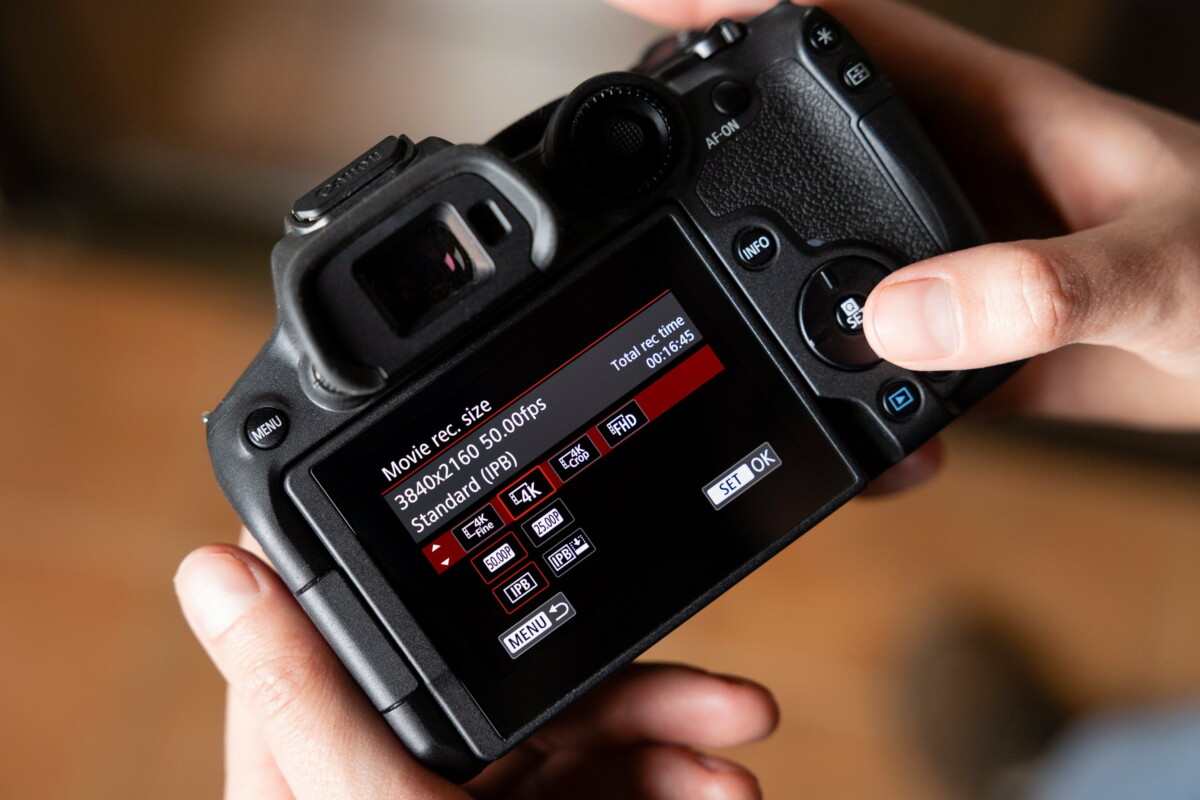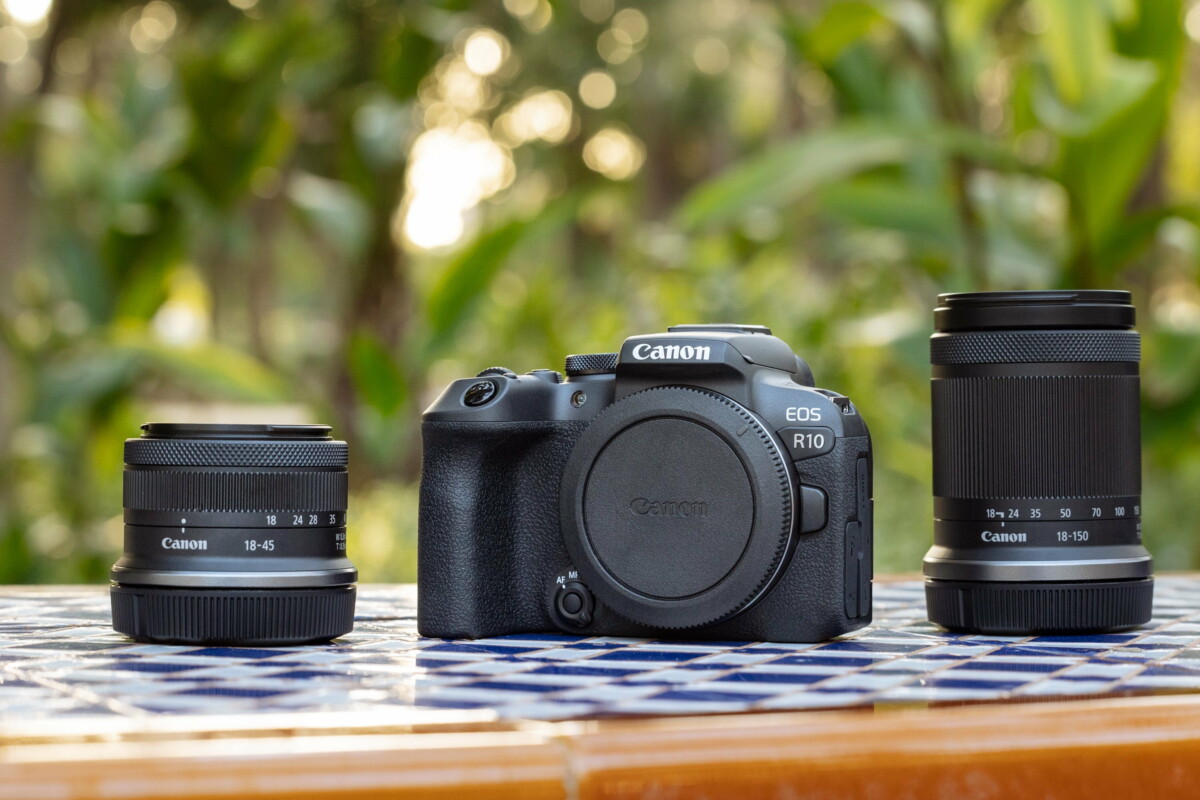Canon has just passed the milestone by unifying its RF mount. Already offered on its full frame cameras, it now equips two APS-C cameras from the Japanese manufacturer, the new Canon EOS R7 and EOS R10.
And three! After the Canon EF and Canon M mounts, the Japanese camera manufacturer announced on Tuesday the arrival of a new mount for its APS-C sensor cameras: the RF mount.
This will not be completely foreign to users of housings and full frame cameras, since it is already the one used since 2018 by the manufacturer’s 24×36 hybrid cameras. Concretely, this means that the two new boxes unveiled on Tuesday by Canon will be able to work with the RF optical fleet already launched by the manufacturer over the past four years. As a reminder, the firm already offered 23 lenses with the RF mount, a figure which now rises to 25 with the two optics unveiled in parallel with the two new APS-C bodies. We will come back to it. However, this turning point also marks a stopping point for the manufacturer’s EOS M range and the M mount, dedicated until now to APS-C hybrid cameras, at the same time.
As for the new boxes, Canon is therefore unveiling two new hybrid cameras with APS-C photo sensor, the Canon EOS R10 and the Canon EOS R7. If these two devices use the nomenclature of full frame devices, they are however indeed boxes with APS-C sensor, more compact and more accessible than the EOS R6, EOS R5 or EOS R3.
An accessible Canon EOS R10
The Canon EOS R10 is now Canon’s entry-level in the interchangeable lens camera segment, taking over from the old EOS 70D and EOS 80D SLRs. It has a 24.2 megapixel APS-C sensor without stabilization, a Digic X image processor, a 23fps burst mode with electronic shutter, a sensitivity of 100 to 32 000 ISO (51000 ISO in extended mode) and a shutter speed that can go up to 4000th second. For video, the EOS R10 offers a capture mode in 4K at 30p without cropping or in 4K 60p with crop. Note also that the device can operate in video without time limit.

The Canon EOS R10 is distinguished above all by its featherweight with 429 grams on the scale, battery and SD card included. In terms of ergonomics, it also benefits from a 280-degree screen with 1.02 million points. We will also find a small retractable flash as well as a microphone input – no headphone output. Crucially, Canon has added a dedicated focus method button – to switch between manual focus and auto focus. However, unlike the other buttons, this key is not programmable.
An action-oriented Canon EOS R7
For its part, the Canon EOS R7 wants to be a little more upscale and seeks to succeed the Canon EOS 7D. The case is equipped with a better defined APS-C sensor of 32.5 million pixels and with sensor stabilization up to 8 stops. Canon also offers an original function, the automatic level. Concretely, the device is able to use the mechanical stabilization of the sensor to compensate for the shot by a few degrees if it detects that the case is slightly tilted at the time of capture.
Regarding the characteristics of the case, the EOS R7 is more efficient than its cousin in the field of sports or animal photography. It thus benefits from a shutter speed that can go up to 1/16000s in electronic mode and 1/8000s with the mechanical shutter. For video, this time it offers a 4K 60p mode without cropping as well as recording in C-log 3 format.

In terms of ergonomics, the Canon EOS R7 this time offers a headphone output in addition to the microphone jack, a double SD UHS-II card slot and a 1.62 million-dot swivel screen.
Two APS-C RF mount lenses
In addition to these two lenses, Canon is launching its first RF mount optics designed for APS-C sensors. These are two variable aperture zooms, an 18-45mm (f/4.5-6.3) lens – 29-72mm equivalent – and an 18-150mm (f/3.5-6) lens ,3) — 29-240 mm equivalent.
These two lenses can of course be used with the new EOS R7 and EOS R10, but also with Canon’s full frame cameras, subject to a crop in the image. The manufacturer’s previous lenses can also be used with the new cameras, but again with a 1.6x crop.

The Canon EOS R10 will be available at the end of July at a price of 979 euros without lens, 1099 euros with the 18-45 mm zoom and 1379 euros with the 18-150 mm. For its part, the Canon EOS R7 will be available at the end of June, naked at 1499 euros or 1899 euros with the 18-150 mm lens. In addition, Canon will offer an EF-RF adapter ring at the launch of the two cameras to allow users of APS-C DSLRs to use their own lenses.
As for the lenses, the RF-S 18-45mm f/4.5-6.3 IS STM will be available at the end of June at 349 euros. The RF-S 18-150mm f/3.5-6.3 IS STM zoom will be available during the same period at a price of 569 euros.
To follow us, we invite you to download our Android and iOS application. You can read our articles, files, and watch our latest YouTube videos.
